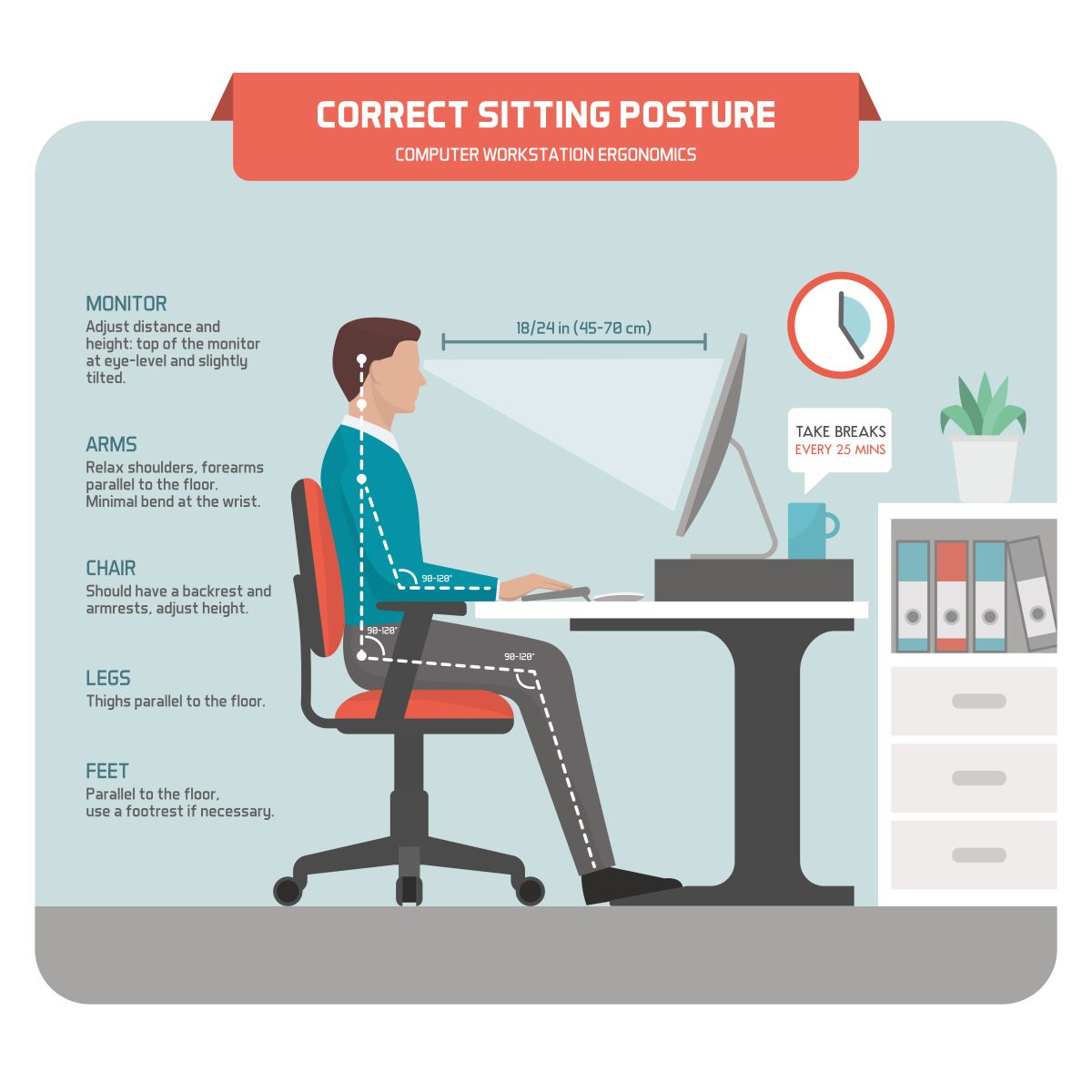When spending a lot of time at your desk, it can be easy to forget about things like proper posture and you can end up with a sore neck and back. Spending time at a desk is often necessary, but it doesn’t have to lead to a stiff neck as long as you follow a few tips and take some time to add in a bit of movement to your day. The following tips can help you prevent neck pain before it even starts.
Take breaks from sitting
Our bodies have a tough time staying still, especially when are sitting for long periods. It’s best to change your posture every 20-30 minutes. If you have the opportunity to switch between sitting and standing, that is an excellent option. Taking breaks from sitting can also involve standing and doing a quick stretch for a few seconds or going for a water break. To remind yourself to take breaks from sitting, set a timer or put a sticky note up where you would see it often.
Make sure you have an ergonomic set up
At home, we may all be guilty of sitting on the couch with a laptop, but for the long-term health of your neck and back, it is best to look into an ergonomic set up for your workstation. At your work, you may have the resources available to have a professional look at your ergonomic set up, but you can also check on some points yourself.
To best set up your workstation, make sure you have a good chair that allows you to sit with feet flat on the floor, and knees bent at a 90-degree angle. Your monitor should be placed 18-24” from your eyes and the top of the monitor should be around eye level. If you’re using a laptop, consider using a stand to place the screen at a higher level and angle the keyboard down for good wrist health. See the first photo for a checklist to go through.
Another way to add variety to your workstation set up is to try a standing desk if your office has these available. This is an excellent way to vary your posture throughout the day!

Strengthen and stretch your neck and shoulders
While it is not necessary to do an entire neck exercise program, there are some great stretches that can be used to prevent and maintain neck health. Start with a pec stretch by putting hands behind your head. Without pulling your head forward, try to squeeze your elbows back until you feel a stretch at the front of your shoulders.

For your neck, add in some movement side to side and try to look over your shoulders. Hold at points that feel tight. Lastly, add in a bit of strengthening to maintain this range by trying a chin tuck. Think of a string pulling you up from the crown of your head. With that in mind, tuck your chin in slightly, but don’t go too far. Hold for 10 seconds.

You may feel this as a stretch in the back of the neck, or feel the muscles working at the front of the neck. By strengthening these, you help prevent the “chin poking” posture. Doing these stretches in your movement breaks can be a great way to incorporate tip 1.
By following these three tips, you can help to prevent neck pain. If you find that neck stiffness and pain is sticking around and bothering you for more than 3 days, see a physiotherapist at pt Health for more exercises and ways to treat your specific condition.
If you would like to schedule an appointment with a physiotherapist, find a clinic near you and book online.
Note: The exercises and/or movements in this blog are not intended to replace the advice of your clinician. If you are unsure, please speak to your clinician before attempting any of the suggestions below.
This blog originally appeared on Lifemark.ca and was written by Tristyn McLean and Miranda Lohues.

